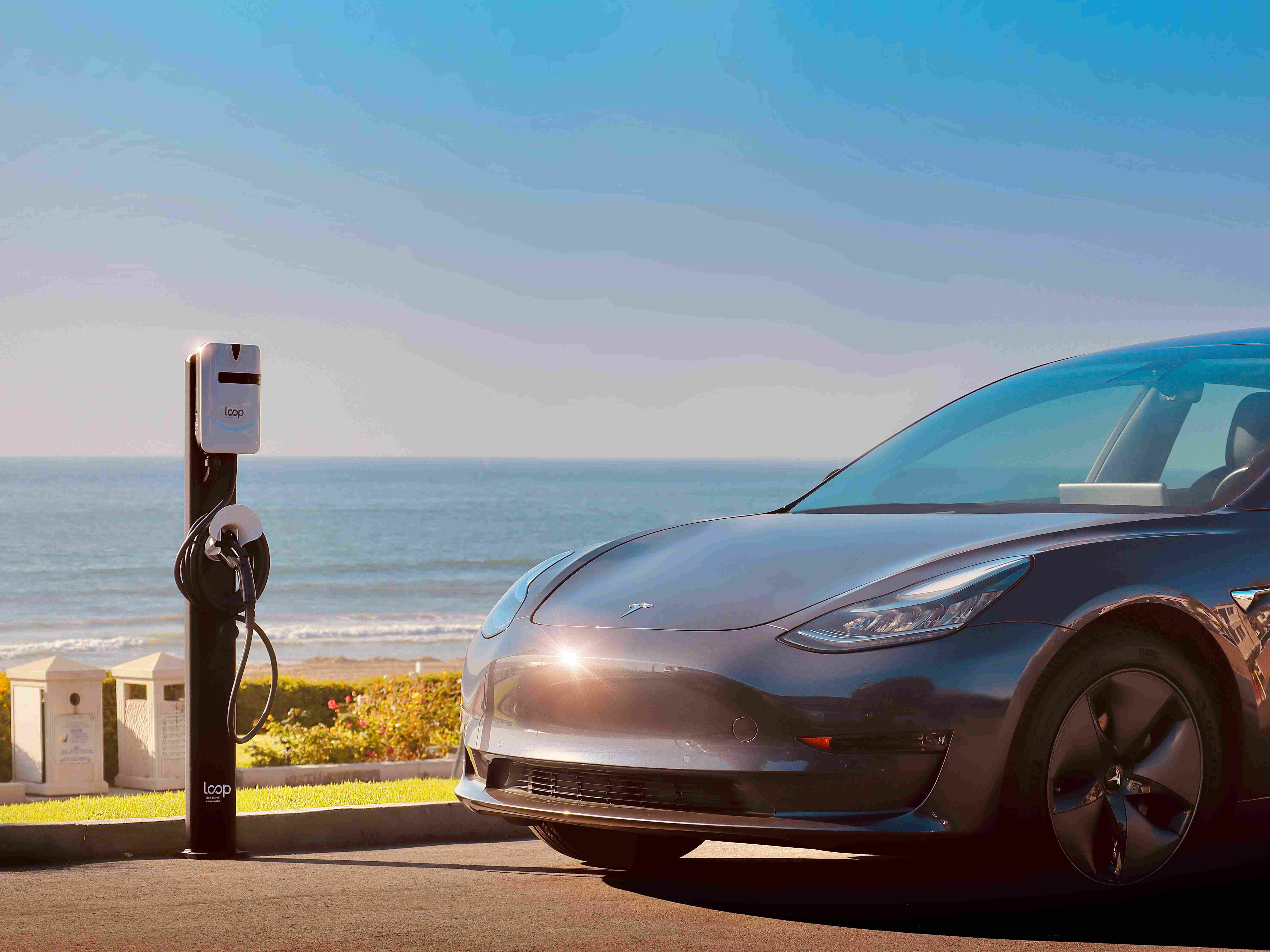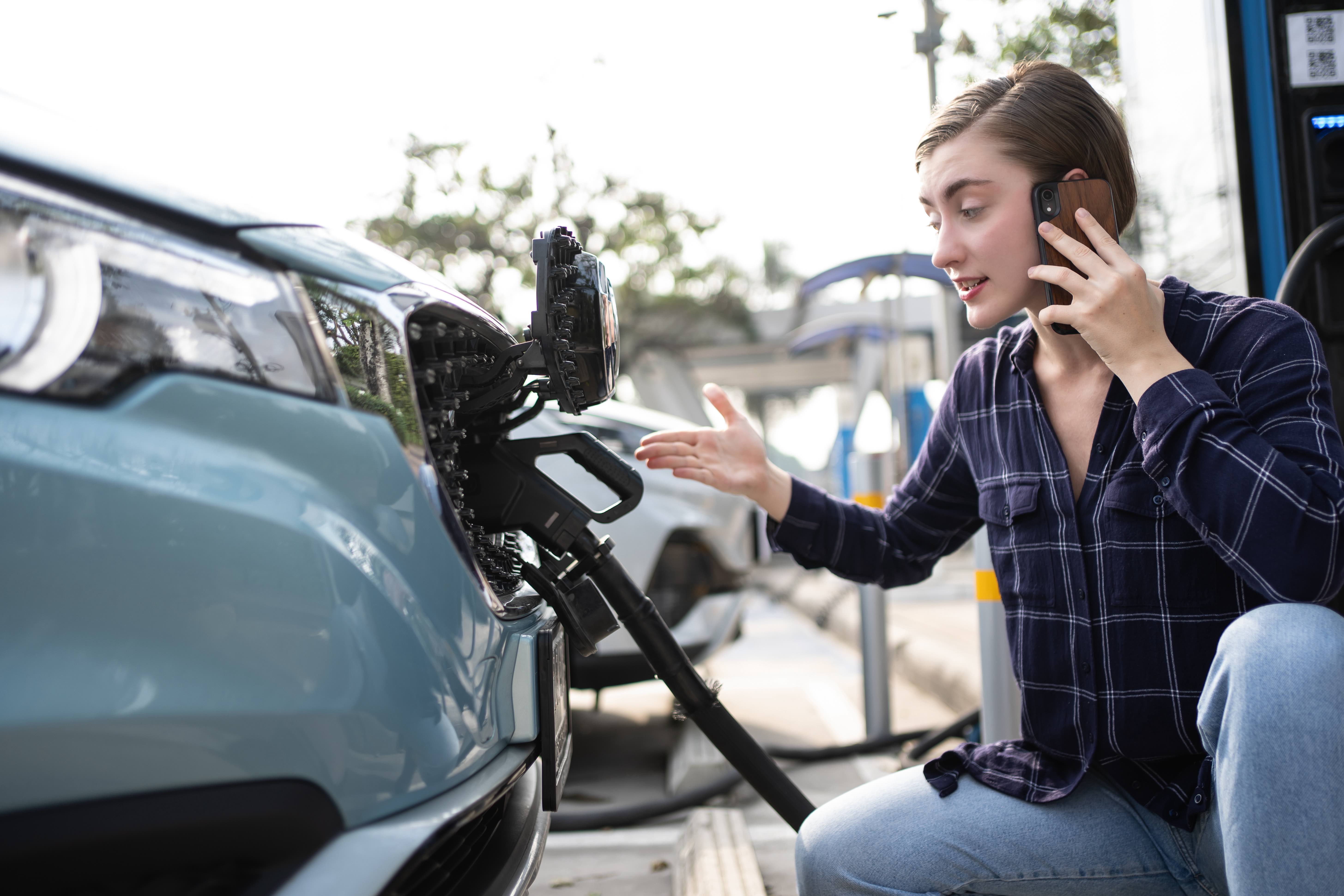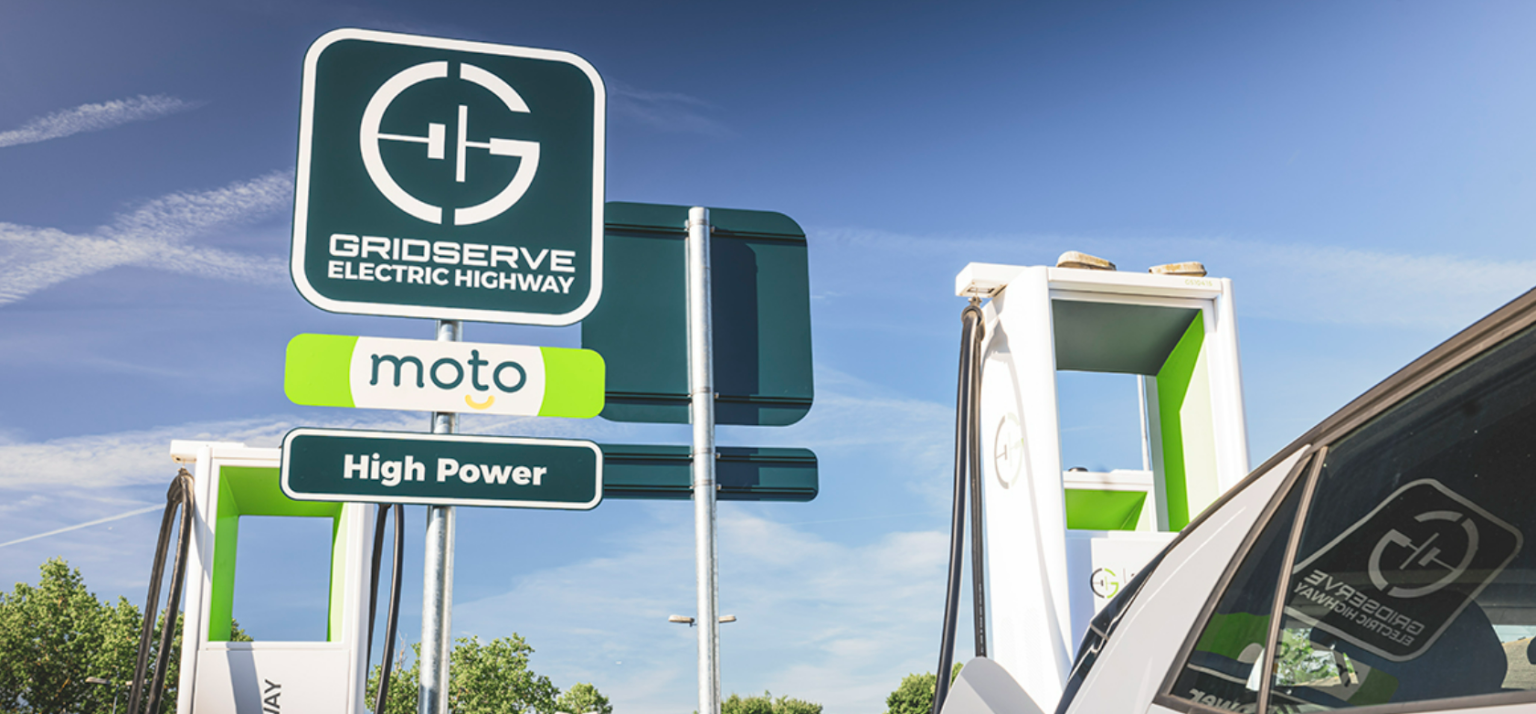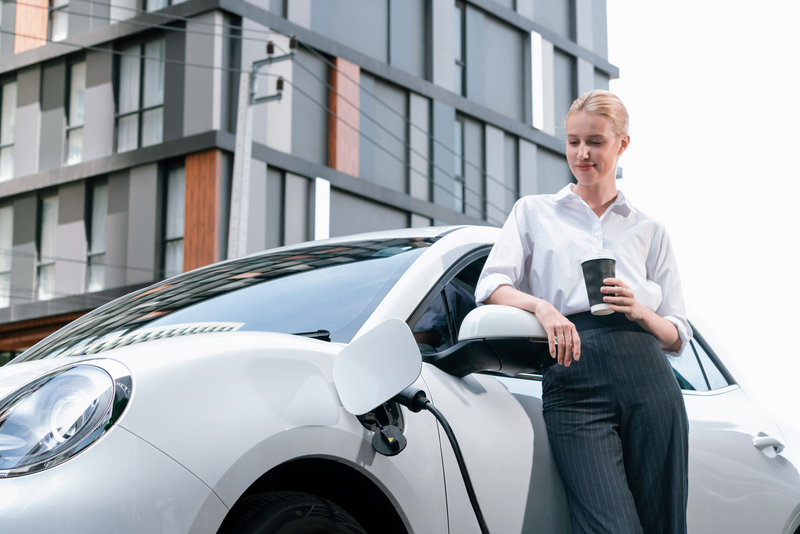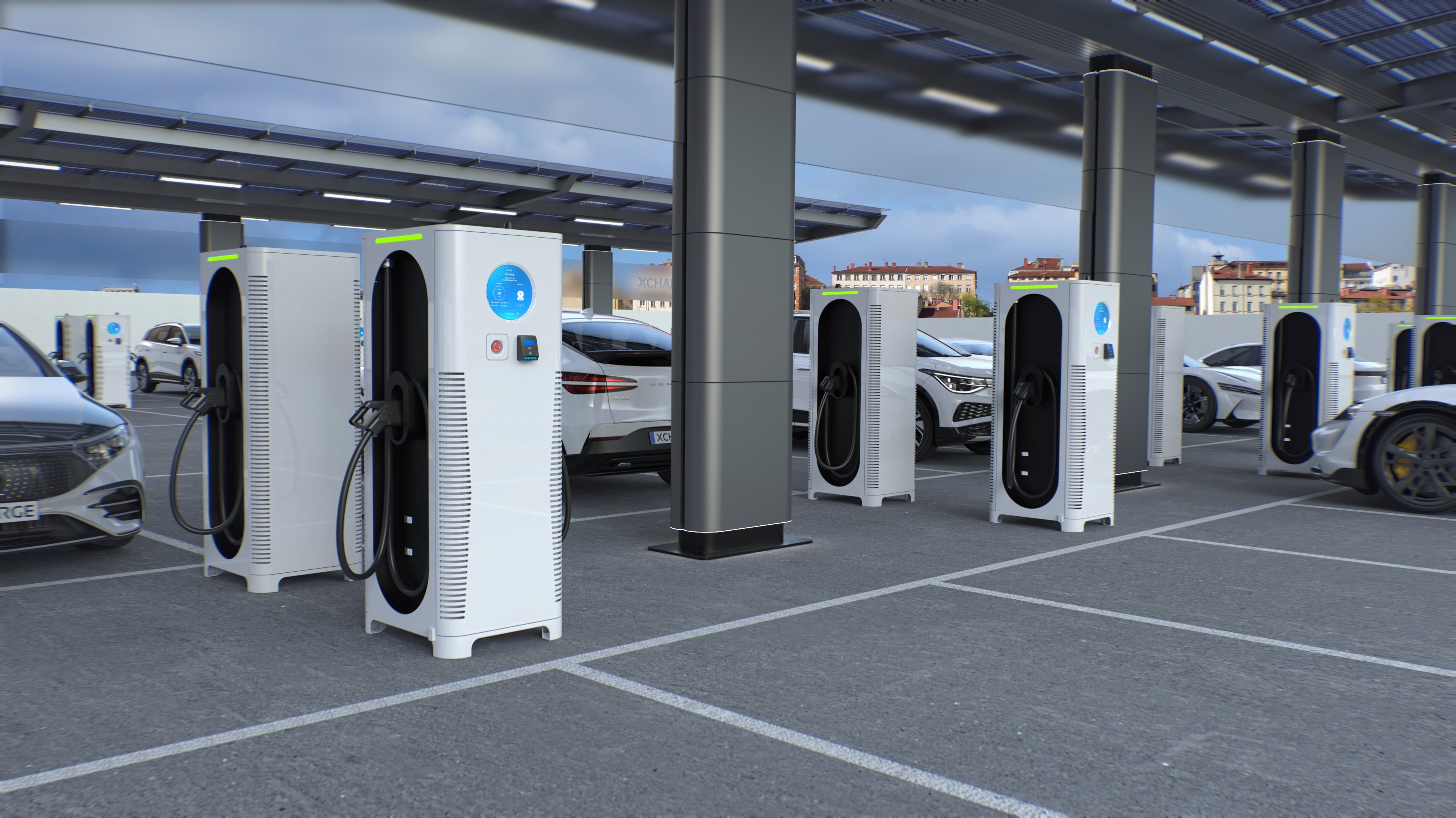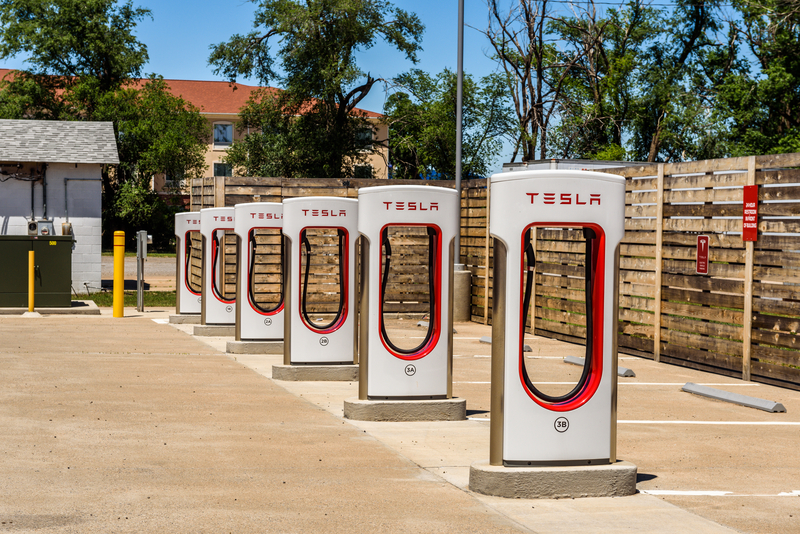
There has been a great deal of buzz around the fast-charging partnerships between automakers and Tesla. Matt Bloom of AmpUp has been part of many related conversations. In fact, he hosted a Twitter Live event shortly after the announcement that Ford and GM had made deals with Tesla, and not long before it was announced the EV specialist Rivian would also be partnering with Tesla on charging.
“NACS news has been a hot topic the past few days, and I’ve been hearing many opinions on it because of where I’m positioned, talking to multiple EV charging providers throughout the industry every day,” Bloom said.
Bloom recently provided EVCANDI.COM with insight into the impact of the deal.
How will the recently announced partnerships benefit GM/Ford and Tesla?
Put simply, the recent Tesla partnership inked with GM and Ford will help these long-time car manufacturers sell more electric vehicles. Although most charging happens on a Level 2 station where people work and live, reliable fast-charging for longer commutes gives customers an experience closer to that of a gas station. This additional comfort is important to those shopping for an EV, so it is not surprising that Ford and GM focused on solving that pain to stay competitive.
Besides those three, who are the winners?
Ultimately, EV charging plug standardization benefits the consumer when the right technology is chosen. Especially as latent adopters begin buying electric vehicles, they don’t want the charging process to be complicated and confusing. Having a standard charging cable at every charging station that spans vehicle brands will simplify charging and increase adoption.
Who are the losers?
It is hard to select automotive winners and losers this early. The NACS plug is becoming a standard in North America, but Europe and Asia have already adopted different plug standards, some by law. If NACS is the standard of choice, then the winners will be the automotive and charging companies that can provide differentiated products and services within the standard, leaving the others in the dust.

On your Twitter Live, a data guru said Tesla chargers get 90% user approval, vs. 50-60% for CCS. Is it fair to say we need that higher approval (a better customer experience) for widespread adoption?
Absolutely. If EV adoption is going to move from early adopters to the early majority, there is little room for error for the charging experience. Most EV drivers are simply seeking reliable charging and accurate billing for now.
I’d also note the ‘Rate Your Charge’ project from Out of Spec Studios is an insightful collection of crowdsourced charge station ratings, and mostly public DC Fast Chargers. While not a huge sample size, it seems the Tesla fast chargers may have a higher rating on average (although we must note that there are far more Tesla fast chargers than competing brands today). It would be interesting to see statistics on Level 2 charging at people’s homes and common charging locations like workplaces, hotels, and parking lots to get a more accurate read on approval rates.
What is better about the Tesla experience?
I think it is widely accepted that Tesla fast chargers provide convenience and reliability, and people are willing to pay for that. Non-tesla drivers have, on average, faced more challenges with fast charging but experience certainly varies.
Level 2 charging however can be categorized differently since L2 chargers are more ubiquitous and the customer’s needs are different. Many station owners want to have complete control of pricing, revenue collection, and driver access, which companies like AmpUp provide but proprietary networks do not.
Are there other ways these agreements could speed adoption?
Other than the earliest EV enthusiasts, much of public skepticism comes from lack of understanding. The more that the industry can standardize the EV charging experience with ease of use in mind, the simpler the learning and adoption process will be.
In addition to the NACS plug, a few areas come to mind, like standardizing the location of the charging port on the vehicle, minimum power output per station, and fair but competitive pricing. There are also several working groups automotive and charging companies participate in, such as the National Charging Experience Consortium, led by the Joint Office of Energy and Transportation and CharIN.
Are these partnerships a case of automakers becoming impatient and simply working things out themselves?
There are many people speculating why each company has made this decision. Some have said that this is a chance for Tesla to focus their core business on charging station networks while the big passenger car OEMs stay in their core vehicle business. Others think this is a show of Tesla’s power, to make their first mover and technical advantage more impressive across the continent. Either way, the choice may benefit all parties if it does span the entire industry by increasing user experience.
Do these partnerships essentially make NEVI meaningless?
Historically, companies relying on government incentives is not a formula for long-term success. The federal NEVI funds were overwhelmingly specific and unachievable for the average automotive or charging company, and allowing each state to adopt NEVI in their own manner has made for more confusion.
Administrators of NEVI funds should consider rewriting the requirements to allow for any plug standard. The industry is over a year into NEVI work with nothing to show for it. Fast-charging projects can take years to build due to utility power needs, supply chain delays, and permitting. If the government wants fast chargers available sooner, then they need to make NEVI more accessible.
What about government incentives? Will they apply?
There are hundreds if not thousands of local and federal government incentives for EVs and charge stations. While some may require the NACS standard in the future, most are not picking a standard winner so that adoption increases regardless of hardware. The agnostic funding approach is the best one since the market should be responsible for deciding which solution they need.
Are car manufacturers supporting both CCS and NACS?
Everyone in the industry seems to be awaiting input from more vehicle manufacturers – will they or won’t they join the NACS trend? So far, we have three major EV OEMs making their vehicles compatible with NACS, but CCS vehicles and charging cables remain dominant in existing EVs outside of Tesla. It is worth noting most car manufacturers will need to support CCS, NACS, and others since standards vary by geography.
It is unclear now how the rest of the OEMs will adapt to this news, and a similar mixed reaction has come from the charger hardware providers. Luckily for AmpUp users, our software is compatible with multiple chargers regardless of cabling.
Most of the charging occurs at residences, correct? These partnerships would have no impact on those charges. Given that, is too much being made of these agreements?
Yes, the majority of charging times occur where people are parked the longest – home, work, fleet depots, parking lots. There is likely no near-term impact on Level 2 chargers in these locations since the J1772 standard works for most vehicles, and the Tesla adapter works with these chargers easily.
The NACS press releases definitely created noise but I think the signal for now is to make new EV drivers comfortable with the gas station model they are used to. After owning an EV for some time, however, they will likely realize how little they need fast charging.
Someone on Twitter Live referenced “the next shoe to drop.” Do you have any thoughts on what it might be?
I can’t recall what that is reference to but it is likely the next NACS announcement by an auto OEM or charging company. The Twitter session was recorded following GM’s announcement. AmpUp announced our support for NACS the next day and many other charging companies soon after.
What will the impact be in Europe and other parts of the world?
That remains to be seen. However, industry consensus is that Europe and China will remain largely unaffected by this news because they already have high EV adoption and expansive charging networks based on other standards. As we all know, even Tesla vehicles sold in Europe use the CCS standard. But it’s possible that supply chain forces from North America could trickle outward based on how widely this standard is adopted in the future.
What about the drivers? What matters most to them?
What’s most important to EV drivers is simplicity. The average driver doesn’t want to think this hard about charging their car, which is why AmpUp works tirelessly to make the process easy. Regardless of which charging standard wins here, standardizing the charging cable is one way to take needless complexity out of the equation by ensuring that all vehicles and chargers can interact.
It is also worth reiterating how ubiquitous and reliable most Level 2 chargers are today. Before I drove an EV I never noticed them, but now I realize they are everywhere. As someone who almost exclusively charges on Level 2, I think every property owner, fleet, and parking operator should be seriously considering how to attract customers or satisfy their tenants' fueling needs with a Level 2 charge station project of their own.

About Matt Bloom and AmpUp
Matt Bloom, is director of partnerships at AmpUp: "My role is to facilitate partnerships with electric vehicle charger manufacturers and automotive companies who need a software solution for their end customers. My background is in clean energy business development and venture capital.
"Our managed charging solution is simple, accessible, and easily deployed and has earned the trust of major fleets, property groups, and utilities. We are the glue that connects charging stations, site hosts, installers, and drivers within the same e-mobility ecosystem."
How does AmpUp serve the industry? "Customers deserve choice, so AmpUp has always been an OCPP open source solution, ready to deploy for major EV charging brands," says Bloom. "This way, an EV driver can find the right charger in the AmpUp network that meets their needs, and site hosts can select the right charging stations to deploy on their property."


